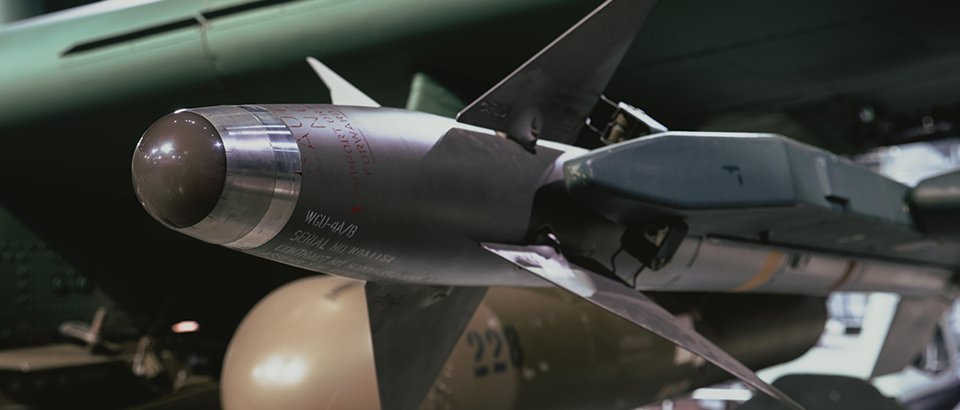Warfare has changed from hand-to-hand combat to a more defensive approach. With fighting styles evolving, it stands that the weapons used would also improve. Today one of the biggest projects that militaries all over the world are working on is the development of hypersonic weapons. These weapons have been tested by multiple countries over the last several years.

Read on to learn what hypersonic weapons are, the different types, their status in today’s world, and how can hypersonic missiles be detected.
What Are Hypersonic Weapons?
Hypersonic weapons are normally defined as fast, low-flying, and highly maneuverable weapons designed to be too quick and agile for traditional missile defense systems to detect in time.
Unlike most hostile fire sources, hypersonic weapons don’t follow a predetermined trajectory and can maneuver on the way to their destination, according to the Congressional Research Service.
The term “hypersonic” describes any speed faster than five times the speed of sound, also known as Mach 5, which is roughly 760 miles (1,220 kilometers) per hour at sea level.
Types of Hypersonic Weapons
There are two types of hypersonic weapons.
- Hypersonic Glide Vehicles (HGVs) – HGVs are launched from a rocket or missile before gliding to a target. They fly at a higher altitude.
They are known for their ability to maneuver and change course quickly. This makes it easier to evade detection and deflect other defensive measures.
Since they travel at high speeds, it makes them harder to detect and interpret. - Hypersonic Cruise Missiles (HCMs) – HCMs are powered by high-speed, air-breathing engines, or “scramjets,” that produce thrust after securing their target. They are also highly maneuverable and can easily evade defenses.
They can be launched from a variety of platforms including:- Land-based systems
- Aircraft
- Ships
How Are Hypersonic Weapons Used Today?

China, the United States, and Russia have the most advanced capabilities to develop these weapons.
Russia
Russia claimed to have used a hypersonic weapon during its war on Ukraine. However while it can travel at hypersonic speeds, Russia’s weapon isn’t classified as a hypersonic weapon.
They also have two other weapons that they claim to be hypersonic:
- The Avangard is a glide vehicle that was launched from an intercontinental ballistic missile and reportedly carries a nuclear warhead.
- Tsirkon is a ship-launched cruise missile that is reportedly capable of striking both ground and naval targets.
Russia has reportedly added hypersonic cruise weapons to the frigate Admiral of the Fleet of the Soviet Union Gorshkov and is participating in exercises in the coming months.
China
Reportedly China conducted tests on two possible hypersonic weapons in the summer of 2021, including the launch into space of an orbiting hypersonic weapon capable of carrying a nuclear payload.
China has disputed reports of the tests, saying it simply launched a reusable space vehicle. Previously, China conducted some successful tests of the other weapons that could be launched now.
The United States
The United States is several years behind other countries in developing hypersonic weapons so they are working overtime to catch up. However, they are heavily investing in developing new technology with the US Navy and US Army working on specific projects.
The Air Force and DARPA completed a free flight test of its Hypersonic Air-breathing Weapon Concept (HAWC) in 2021. The engine compressed incoming air mixed with its hydrocarbon fuel and began igniting that fast-moving airflow mixture, propelling the cruiser at a speed greater than Mach 5.
The United Kingdom, United States, and Australia said in a joint statement that they are cooperating on “hypersonics and counter-hypersonics” as part of their new Aukus security pact.
Other Countries
Other countries that are investigating the tech are India, Japan, Australia, France, Germany, and North Korea (which claims to have tested a hypersonic weapon).
Can Radar Detect Against Hypersonic Weapons?
Part of the tactical appeal of hypersonic weapons is that their high speed puts radars at a disadvantage when it comes to tracking and detection. Radars can detect objects that they can bounce energy off of. That means that an airborne target will be hit by energy emitted from the radar and that energy will bounce back into our radar. From that, personnel can determine the range, speed, azimuth, and elevation of the airborne target. Multiple detections form a track, or a trajectory of the target, over time.
The challenges with hypersonic weapons are first to be able to even detect a hypersonic missile, and second since they are highly maneuverable, how do you intercept them?
Radars need to be set up to track fast-moving objects otherwise the signals from the hypersonic missiles won’t be shown on the same track and would become impossible to track them over time—even if you are receiving signals from the weapon.
However, engineers are working to create countermeasures for them.
One way to tackle the challenges these weapons present is to build a system that has no holes in its coverage. This can be accomplished by using higher frequencies that increase a radar’s resolution, making it easier to detect smaller, fast-moving objects.
The Pentagon authorized the creation of a system that can track hypersonic weapons from launch to impact. This system will be able to transmit information to surrounding aircraft, ships, or land headquarters.
Military personnel can try using multiple radar systems as another way to track these weapons:
- Each system focuses on a different aspect of a hypersonic weapon.
- Each can act on different frequencies.
What is the Next Step?
As it stands currently, radars have the potential to detect hypersonic weapons but the technology is still developing. For example, when man portable air defense system (MANPADS) were first invented, radars, like the Extended Multi-Mission Hemispheric Radar (exMHR) had to evolve to be able to track and detect these threats.
Will multi-sensor fusion advance to be able to show hypersonic weapons in battlefield awareness? Or is there a new technology yet to be explored? These types of questions keep engineers and radar techs working to see where this new technology will go and what they can create to defend against it.
While the relationship between hypersonic weapons and radar is still being explored, radar is still an effective weapon in detecting and identifying other weapons, such as MANPADS and unmanned systems. These weapons can’t be discredited and their technology is still a threat to warfighters.
Working on how can hypersonic weapons be detected and keeping their products updated are some of the ways the military can stay competitive in keeping its warfighters safe. Learn more about how DRS RADA Technologies radars help protect and support warfighters.